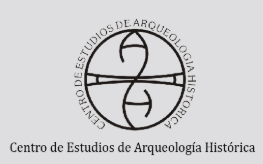Pachacamac: a navigational landmark in the late 18th and early 19th centuries
DOI:
https://doi.org/10.35305/tpahl.v20i1.241Keywords:
Pachacamac, Cultural Landscape, Nautical charts, Travellers and scientistsAbstract
The Pachacamac sanctuary was home to one of the main deities of pre-Hispanic Peru; its power was expressed in the call to dozens of pilgrims who came to this sacred space to make their supplications. Its strategic location was reaffirmed in the last period of pre-Hispanic occupation, when with the arrival of the Incas and the construction of the Temple of the Sun, in addition to its essential religious functions, this building transformed the coastal marine landscape for economic and political purposes. In the imagination of the 20th and 21st centuries, Pachacamac represents a set of sacred constructions in the coastal desert. With the intention of understanding the relationships that existed between the sanctuary and its surrounding territory, we analyzed the archaeological record, pre-Hispanic representations in various media, colonial chronicles, nautical charts from the 18th and 19th centuries and references from scientific-travelers of the 20th century. XIX, which suggest that the meaning of Pachacamac did not lie solely in the buildings and temples built by pre-Hispanic societies over a thousand years, but that the sanctuary extended over a continuous space, which involved, from its earliest times, aquatic ecosystems, coastal wetlands, the Lurín River and its valley, the coastline and the adjacent islands, as elements and symbols of its prestige and sacredness as an expression of our Andean cultural identity.
Downloads
References
Deustua, J. R. (2017). Sociedad, ciencia y tecnología: Mariano de Rivero, la minería y el nacimiento del Perú como República, 1820-1850, Apuntes, 44(80), 51-77.
Hamy, E. T. (1882). Les collections péruviennes du docteur Macedo, Revue d’Ethnographie, 1, 68-71.
Macedo, J. M. (1880). Memorandum Histórico, Colección Manuscritos de José Mariano Macedo, Lima.
Majluf, N. (2022). La invención del indio: Francisco Laso y la imagen del Perú moderno. Instituto de Estudios Peruanos.
Majluf, N. (2013). Rastros de un paisaje ausente: fotografía y cultura visual en el área andina. Caiana, revista de historia del arte y cultura visual del centro argentino de investigadores de arte (3).
Middendorf, E. (1894). Peru: Beobachtungen und Studien über das Land und seine Bewohner. R. Oppenheim.
Penhos, M. (2005). Ver, conocer, dominar: imágenes de Sudamérica a fines del siglo XVIII. Siglo XXI Editores Argentina.
Pillsbury, J. (2017). Ilustración arqueológica en los Andes (1850-1890). Boletim do Museu Paraense Emílio Goeldi. Ciências Humanas, 12, 315-330.
Pizarro, S. (2021). Antigüedades Peruanas – Propuesta estética [Tesis magister en Arte Peruano y Latinoamericano, Universidad Nacional Mayor de San Marcos]. Repositorio institucional de la Universidad Nacional Mayor de San Marcos. https://cybertesis.unmsm.edu.pe/ handle/20.500.12672/17056
Pozzi-Escot, D., Sala i Vila, N., Villar, R. & Fuentes, S. (2024). Testimonios y evidencias: cartografía del S.XVIII para la comprensión de la arquitectura del Templo Pintado de Pachacamac. Teoría y Práctica de la Arqueología Histórica Latinoamericana, 18(1), 9-27. https://doi.org/10.35305/ tpahl.v18i1.214
Pozzi-Escot, D., Sala i Vila, N., Villar, R. y Fuentes S. (2022). El periodo colonial temprano en Pachacamac, una aproximación a partir de las excavaciones de la Pirámide con rampa 13 y el Templo Pintado. Teoría y práctica de la Arqueología Histórica Latinoamericana, 16(1), 39-54.
Pozzi-Escot, D., Villar, R., Fuentes, S., Molina, A., Miranda, C., Urrutia, J., Falcón, R., Abad, S., Chipana,
H. y Abad J. (2020). Quema de contextos funerarios humanos en la PCR13 de Pachacamac. Metodología y primeros alcances. Actas del IV Congreso Nacional de Arqueología, Ministerio de Cultura, Lima, 95-108.
Pozzi-Escot, D., Villar, R., Fuentes, S., Molina, A., Miranda, C. y Urrutia J. (2018). Resurgir de las cenizas. Un hallazgo excepcional en Pachacamac. Lienzo [Lima], 38, 181-209.
Ravines, R. (2013). Pachacamac: monumento nacional. Boletín de Lima, 171(35), 93-130.
Rivero y Ustaríz, M. E. (1851). Antigüedades peruanas. Imprenta Imperial de la Corte y del Estado. Schumacher, J. (1874). Explorations among the ruins of Pachacamac, Journal of the American Geographical Society of New York, 5, pp. 248-255.
Volney, M. (1791). Les ruines, ou Méditation sur les révolutions des empires; par , député à l’Assemblée nationale de 1789. Desennes.
Wiener, CH. ([1880] 1993). Perú y Bolivia. Relato de viaje. Instituto Francés de Estudios Andinos- Universidad Nacional Mayor de San Marcos. DOI:10.4000/books.ifea.7800

Downloads
Published
How to Cite
Issue
Section
License
Copyright (c) 2025 Teoría y Práctica de la Arqueología Histórica Latinoamericana

This work is licensed under a Creative Commons Attribution-NonCommercial-ShareAlike 4.0 International License.






